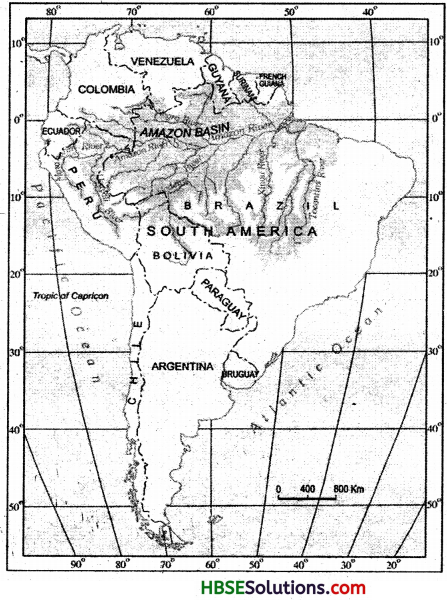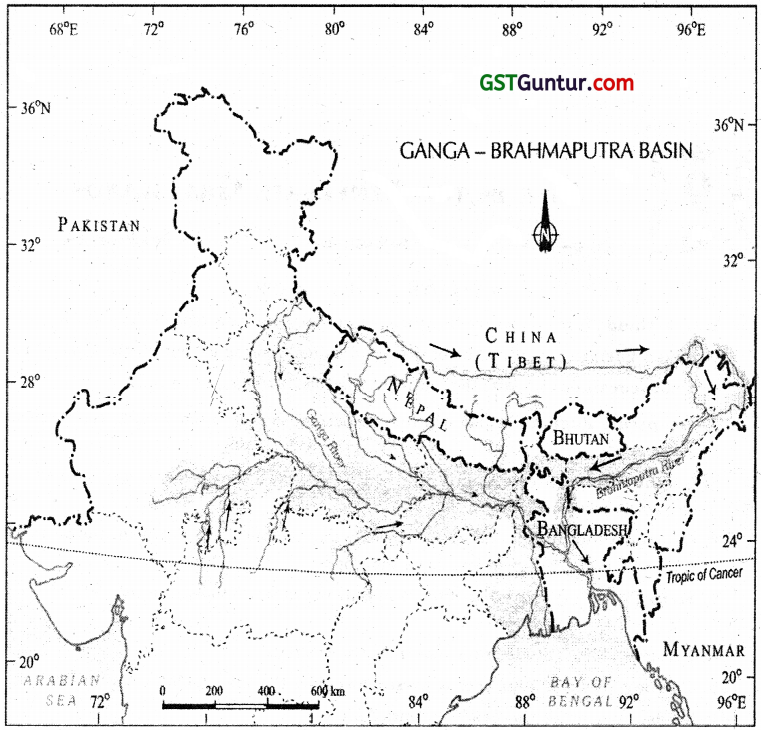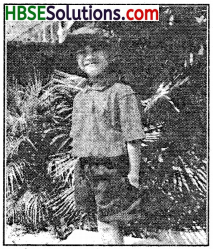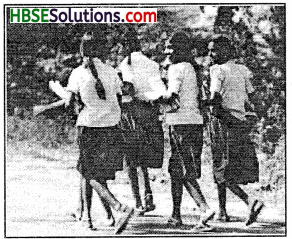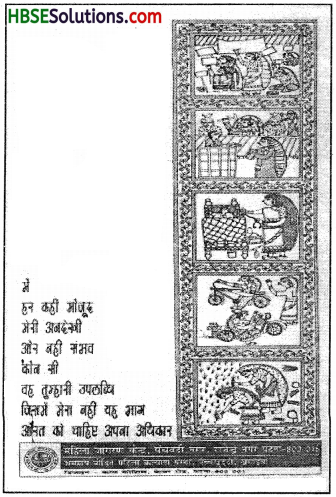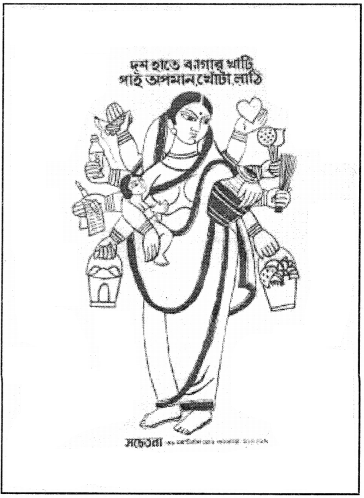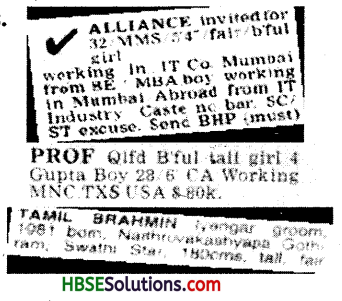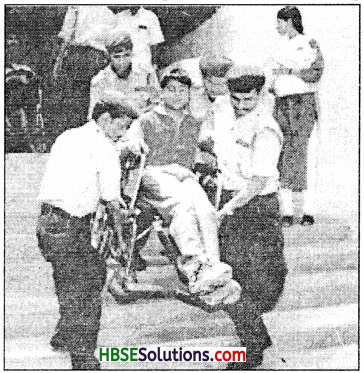Haryana State Board HBSE 7th Class Social Science Solutions Civics Chapter 2 Role of the Government in Health Textbook Exercise Questions and Answers.
Haryana Board 7th Class Social Science Solutions Civics Chapter 2 Role of the Government in Health
HBSE 7th Class Civics Role of the Government in Health Textbook Questions and Answers
Question 1.
In this chapter, you have read that health is a wider concept than illness. Look at this quote from the Constitution and explain the terms ‘living standard’ and ‘public health’ in your own words.
An important part of the Constitution says it is the duty of the state to raise the level of nutrition and the standard of living and to improve public health.
Answer:
Living Standard:
It refers to the standard of living enjoyed by the people in reference to the facilities provided by the government or family. It also refers to the status earned by the people.
Public Health:
‘Public Health’ refers to the provision of quality healthcare services either free or at low cost by the government. It also includes the actions to prevent the spread of diseases such as TB, Jaundice and Malaria among public.

Question 2.
What are the different ways through which the government can take steps to provide healthcare for all? Discuss.
Answer:The different ways in which
government can take steps to provide health care for all are:
(a) opening of primary health centres, dispensaries and family welfare centres.
(b) prevention of spread of diseases.
(c) making provisions to deal with emergency or epidemics.
(d) provision of cheaper health-services for the poor.
Question 3.
What difference do you find between private and public health service in your area? Use the following table to compare and contrast these.
| Facility |
Cost of service |
Availability of services |
| Private |
|
|
| Public |
|
|
Answer:
| Facility |
Cost of service |
Availability of service |
| Private |
Expensive |
Good, quality but to limited high standard of people. |
| Public |
Free or at very low cost |
Ordinary services, not maintained, available to all sectors of society. |
Question 4.
“Improvement in water and sanitation can control many diseases.” Explain with the help of example.
Answer:
Lack of clean water and sanitation is the second most important risk factor for the occurrence of diseases after malnutrition.
(i) Consumption of contaminated water causes many water-borne diseases such as typhoid, cholera, dysentery, diarrhoea.
(ii) Many vector-borne diseases like malaria, Japanese encephalities are caused due to dirty and stagnant water.
So, improvement in water and sanitation can control many diseases.
The Story Of Hakim Sheik
Hakim Sheik was a member of the Paschim Banga Khet Mazdoor Samity (PBKMS), an organisation of agricultural labourers in West Bengal. One evening in 1992, he accidentally fell off a running train and suffered head injuries. He was in ci very serious condition and needed immediate treatment.
He was taken to a government hospital in Kolkata but they refused to admit him because they did not have a spare bed. Another hospital did not have the facility or the specialised doctors necessary for his treatment. In this way he spent 14 hours in a critical state and was taken to eight different government hospitals, but none of them admitted him.
Finally, he was admitted in a private hospital, where he. received treatment. He spent a lot of money on his treatment. Angry and upset over the indifferent attitude of all the hospitals that refused to admit him., Hakim Sheik and PBKMS filed a case in the court.
Question 1.
Read the story given above. Then imagine that you are a judge in the country. What would you say to Hakim Sheik?
Answer:
Being a judge, I would give a fair judgement in Hakim Sheik’s case. He would be granted due compensation. The doctors of government hospitals will be punished for dereliction of duty.
Question 2.
What problems did Aman face in the public hospital? How do you think the hospital can work in a better manner? Discuss.
Answer:
Aman faced the following problems in the public hospitals:
(а) Long queue at the OPD counter.
(b) Great such at the test centre.
(c) Change of doctor, the whole treatment not by the same doctor.
(d) Non-availability of medicines.
Question 3.
What problems do we face in private hospitals? Discuss.
Answer:
(i) India has the largest number of medical colleges in the world.
(ii) It is among the largest producers of doctors.
(iii) Healthcare facilities have grown substantially over the years.
(iv) India gets a large number of medical tourists from many countries.
(v) India is the fourth largest producer of medicine in the word.
Question 4.
In India, it is often said that we are unable to provide health services for all because the government does not have enough money and facilities. After reading the above left hand columns, do you think this is true? Discuss.
| India has the largest number of medical colleges in the world and is among the largest producers of doctors. ApproximatelylS,000 new doctors qualify every year. |
Most doctors settle in urban areas. People in rural areas have to travel long distances to reach a doctor. The number of doctors with respect to the population is much less in rural areas. |
| Healthcare facilities have grown substantially over the years. In 1950, there were only 2,717 hospitals in India. In 1991, there were 11,174 hospitals. In 2000, the number grew to 18,218. |
About five lakh people die from tuberculosis every year. This number is almost unchanged since Independence! |
| India gets a large number of medical tourists from many countries. They come for treatment in some of the hospitals in India that compare with the best in the world. |
Almost two million cases of malaria are reported every year and this number isn’t decreasing. |
| India is the fourth largest producer of medicines in the world and is also a large exporter of medicines. |
We are not able to provide clean drinking water to all. 21per cent of all communicable diseases are water borne. For example, diarrhoea, worms, hepatitis, etc. |
Answer:
It is not true because after reading the left hand column, we come to know:
(i) India has the largest number of medical colleges in the world.
(ii) It is among the largest producers of doctors.
(iii) Healthcare facilities have grown substantially over the years.
(iv) India gets a large number of medical tourists from many countries.
(v) India is the fourth largest producer of medicine in the word.
Question 5.
Private health facilities can mean many things. Explain with the help of some examples from your area.
Answer:
Private health facilties can mean many things. Today these facilities or clinics are run by big companies. Such companies are run by many businesses, associated with these centres. For example, some facilities of medicines, pathology, X-ray, ultrasound are associated with these facilities. Sometimes Answer:The problem faced in private hospitals are:
(а) High cost of treatment.
(b) The doctors prescribe more tests than required that include high costs.
big business houses also have medical facilities associated with them.
Question 6.
Would you associate all or some of these picture (shown on the textbook page 19) with ‘health’?
Answer:
Some of the pictures given on textbook page 19 associated with the health are:
(а) On the top, van with cross sign is in a rural area (i.e. village). Government sends mobile health centre in the form of a van with emergency health service facilities. The doctors and nurses go along with this van in villages, and check the ill people and also treat them by giving medicines.
(b) Some doctors are shown in operation theater operating a patient. These doctors are taking care of the health problems of the patient.
Question 7.
Pick two situations from the collage (shown on page 19) that are not related to illness and write two sentences on how they are related to
health.
Answer:
(i) A woman having two earthen pots on her head is going to fetch water. The women like her, collect water from other open water wells. The water so collected is not clean and creates health problems.
(ii) Two garbage Containers are shown kept in front of the houses in a slum. The containers are used to put in all types of wastes even rotten food particles. The house flies sitting on these wastes carry pathogenic germs to our eatables, as a result we become ill.

Question 8.
(i) Can you provide a title to these columns (given on the textbook page 20)?
Answer:
Titles:
(i) Left hand column: Progress of Health Care System in India
(ii) Right hand column: Paradox of Health Care Progress
(iii) In India, it is often said that we are unable to provide health services for all because the government does not have enough money and facilities. After reading the above left hand column. (see textbook page 20), do you think this is true? Discuss.
Answer:
Yes. It is true that India has progressed a lot in healthcare system since independece.
(a) The healthcare facilities we had in 1950, were insufficient for the population.
(b) Even today when infrastructure of healthcare has developed and increased tremendously, it does not saturate the needs of our growing population.
(c) Our healthcare system in the rural areas is not in a state of meeting the needs of the people.
(d) There is shortage of government hospitals and healthcare centres in the rural area. Even in the cities, we can observe queue of patients.
(v) India is investing on healthcare even less than the average of South Asian countries.
Question 9.
Read the story given (on textbook page 21). Then imagine that you are a Judge in the court. What would you say to Hakim Sheik?
Answer:
(i) This is the fault of our government hospital healthcare services.
(ii) The head of said hospitals would be called upon and asked why Hakin Sheik was refused the admission and treatment.
(iii) This is a fault on the part of the government and for that it will have to compensate Hakim Sheik for the amount that he spent in private hospital on his treatment.
Question 10.
(i) Why did Ranjan have to spend so much money? Give reasons.
Answer:
(a) Ranjan had to spend so much money to make use of the facilities available in private hospitals.
(b) By spending so much money, he saved his time and went through the easy process of treatment.
(ii) What problem did Aman face in the public hospital?
Answer:
(a) Aman had to wait in a long queue at the OPD counter and blood testing room.
(b) He got the blood test results after three days and then went back to the hospital to consult the doctor.
Thus, he faced lot of hardship in the hospital.
(iii) How do you think the hospital can work in a better manner? Discuss.
Answer:
If the number of counters and doctors will be raised and the management of some of its services like cleanliness (safai) and diagnostic tests such as blood tests, stool and urine tests, x-ray, ultrasound, etc. are handed over to the private bodies, the hospital can work in a better manner.
(iv) Where do you go when you are ill? Are there any problems that you face? Write a paragraph based on your experience.
Answer:
(a) We go to the doctoer when we are ill.
(b) Yes.
(c) First problem we face is to wait for long hours in queue for registration. There after, we have to stand in queue to see the dogtor.
After checking doctor advice a number of tests like ECG, blood, urine, x-ray, etc. which cost a lot not only in terms of money but also in terms of time because there is another queue for these tests and their reports.
(v) What problems do we face in private hospitals? Discuss.
Answer:
(a) We have to pay a lot of money for every service that we use in private hospitals.
(b) Sometimes doctors advise costly tests which are not required for the diagnosis.
Question 11.
The inside back cover (cover three) of this book has a map of India. Using your pencil outline the state of Kerala on this way. (NCERT Page 28)
Answer:
(Hints: Here is a guideline for students to do this question. Take a butter paper. Put it on the map of India given on the back cover of this book. With the help of pencil outline the state of Kerala alongwith outer boundary of India on the butter paper and attach it with your answer sheet.)
Question 12.
(i) In what ways is the public health system meant for everyone?
Answer:
(a) According to our Constitution, it is the primary duty of the government to provide health care facilities to all. The government has to safeguard the Right to Life of every person as ensured in the constitution under Fundamental Rights.
(b) So, public health system has to provide medical facilities to all, from poors to rich, domestic worker to the Prime Minister of the country without any discrimination.
(ii) List some public health centres (PHCs) or hospitals near your place. From your experience (or by visiting any one of them), find out the facilities provided and people who run the centre.
Answer:
(Hints: Students do this themselves, but for their guidance a description is given below)
Facilities: I visited Ram Manohar Lohia Hospital. It is run by the Central Government. At present, it is the most clean government hospital in Delhi with a lot of facilities such as-computerised counters for registration for different types of treatment, seating arrangement types of treatment, seating arrangement for the visitors, doctor’s rest room, etc. Most of the tests are conducted in the hospitals.

HBSE 7th Class Civics Role of the Government in Health Important Questions and Answers
Very Short Answer Type Questions
Question 1.
What is health?
Answer:
Health means our ability to remain free from physical illness and injuries. It also includes mental health.
Question 2.
What are communicable diseases?
Answer:
Communicable diseases refer to those diseases that spread from one person to another in many ways such as through water, food and air etc.
Question 3.
Why did Ranjan have to spend so much money on his treatment? Give reasons.
Answer:
Ranjan had to spend so much money on his treatment because he was admitted in a private hospital where the cost of treatment is very high.
Question 4.
What do you understand by ‘Right to Life’?
Answer:
‘Right to Life’ means every individual has the right to live a meaningful and dignified life with basic facilities like food, shelter, clothing and education.
Question 5.
Which organisation in responsible for policy making on healthcare in India?
Answer:
The Ministry of Health and Family Welfare is responsible for formulating policy on healthcare in India.
Short Answer Type Questions
Question 1.
What are the main centres for healthcare facilities and who are the persons associated with him?
Answer:
The main centres for healthcare facilities in India are:
(a) health centres
(b) hospitals
(c) pathological laboratories
(d) blood banks.
The persons associated with these centres are: nurses, health workers, doctors. They can treat, advise and dignose illness.
Question 2.
Describe the work of Medical Council of India.
Answer:
The main functions of Medical Council of India are:
(a) maintenance of uniform and high standards of medical education in India.
(b) registration of medical practitioner.
(c) monitoring of medical practice in the country.
(d) granting recognition of medical qualifications.
Question 3.
What do you understand by ‘medical ethics’?
Answer:
Medical ethics refer to the values that guide medical professional. Such values refer to the honesty, justice, dignity of work practised by medical practitioners.
Question 4.
What are the private health services available in our country?
Answer:
(i) In urban areas, many doctors run their private clinics.
(ii) Some hospitals and nursing homes are privately owned.
(iii) There are pathological laboratories which do tests and offer facilities like X-ray and Ultrasound.
(iv) There are also private chemist shops from where we buy medicines.

Question 5.
Indian doctors do not prefer to work in India, even if they get their education here?
Answer:
Indian doctors prefer to work abroad because:
(i) They get better professional opportunities and research opportunities.
(ii) They get better material benefits for their services.
(iii) Doctors are less professionally discriminated against in other countries.
Long Answer Type Questions
Question 1.
Comment on the policy of Kerala Government in 1996 towards healthcare services.
Answer:
Some major changes introduced by Kerala Government in 1996 are:
(i) 40% of the entire state budget was given to panchayats.
(ii) The villages could now make proper planning for water, food, women’s development and education.
(iii) Health centres were improved.
(iv) The working of schools and anganwadi was ensured.
(v) Water supply schemes were checked to ensure good health.
Though the situation improved yet there were loopholes like shortage of medicines, insufficient hospital beds and less than required number of doctors.
Question 2.
Why healthcare services available equally to all in India? What can be done to remove inequalities in healthcare services?
Answer:
Healthcare services are not available equally to all in India because:
(i) More and more healthcare services are privatised now and they are concentrated in urban areas.
(ii) These services are run for profit and they use modern facilities but they are not affordable by all.
(iii) The poor people are unable to use them.
(iv) Very less percentage of the population can afford medicines required during illness.
(v) The poor people visit government hospitals during sickness which are poorly maintained.
To remove inequalities in healthcare, services:
(a) The government should provide healthcare services to all citizens, especially the poor and the disadvantaged.
(b) The government should improve the basin health condition and sanitation conditions of the people so that diseases do not spread.
Question 3.
Describe the drawbacks of India’s rural healthcare system. What can be done to improve India’s rural healthcare them?
Answer:
The basic drawback of India’s rural healthcare system are:
(a) Lack of specialist doctors.
(b) Lack of modem machines and medical tools.
(c) The local villagers who study medicine prefer to work in city.
To improve India’s rural healthcare system:
(а) The government should increase awareness among rural people about sanitation and healthy environment.
(b) More medical camps should be organised.
(c) The skilled doctors should be given incentives to open clinics in villages.
(d) Provisions of medical facilities even given in small villages.

Role of the Government in Health Class 7 HBSE Notes
- Public: An activity or service that is meant for all people in the country and is mainly organised by the government. For example schools, hospitals, telephone services.
- Private: An activity or service that is organized by an individual or company for their own profit.
- Medical Tourists: This refers to foreigners who come to this country specifically for medical treatment at hospitals that offer world-class facilities at a lower cost than what they would have to pay in their own countries.
- Communicable Diseases: These are diseases that are spread from one person to another in many ways such as through water, foods, air, etc.
- OPD: This is the short form for ‘Out-Patient Department.’ This is where people are first brought in and treated in a hospital without being admitted to any special ward.
![]()
![]()
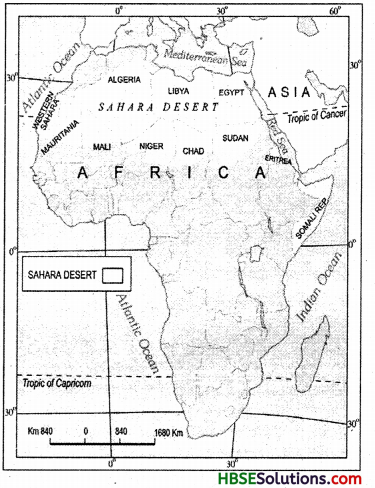

![]()
![]()




